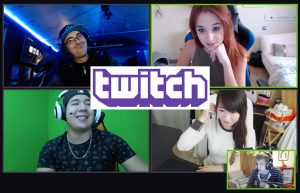
By Paul Baker
Over the past 12 months, video streaming platform Twitch has firmly established itself as the leading live stream service for video gamers, with 2.2m monthly broadcasters and 15m daily users. While that figure may be dwarfed by YouTube’s 1.9bn monthly viewers, it still makes Twitch a significant player in online video, a sector seen as important in reaching a teen and young adult demographic notoriously resistant to traditional forms of broadcast advertising.
When the likes of Time, Forbes and Bloomberg start producing features to document the rise of Twitch, it pays to take notice. The New Yorker even sent a reporter to darkest San Diego to interview a leading Twitch streamer.
Twitch began life in 2011 as a gaming-specific spin-off from the general video streaming platform Justin.tv. By February 2014 Justin.tv was renamed Twitch Interactive. By August that same year Amazon had bought Twitch for $970m US dollars.
So what do people actually watch on Twitch? Well, mainly it’s people playing popular video games like Fortnite, FIFA Soccer, Minecraft and Grand Theft Auto. The most watched streamers will either be very talented gamers, very entertaining presenters or, preferably, both. Of course, for every star streamer like ‘Ninja’ (the most popular Twitcher) who has 11.5m dedicated followers, there’s the teenage enthusiast next door who religiously broadcasts every day to a core audience of his three best mates.
Streams typically consist of a live feed of the game they’re currently playing, inset with a second video showing the face of the streamer themselves. Viewers then communicate with the streamer and each other by sending live messages which are displayed to the right of the main video feed. The social aspect of the platform grows from here, with the ability to send links, tag friends and ask interested viewers to come and watch your channel. Twitch users spend, on average, over 1.5 hours per day watching streams.
So, why should businesses not traditionally involved in the games industry be interested in a streaming service dedicated to video games?
Well, since Amazon got their feet under the table, they’ve been trying to grow the service with a view to eventually have it rival YouTube as the go-to platform for video. The key seems to be a gradual widening of the platform’s scope away from just video games, something the service has slowly accomplished by adding areas for those interested in creative arts, cookery, sports or just chatting to camera.
A quick perusal of the most popular areas on the site now lists non-gaming areas such as Talk Shows & Podcasts, Music & Performing Arts and even Travel & Outdoors rubbing shoulders with the top gaming streams.
Remember, this content is streamed as live, so the biggest names on Twitch stream good quality content, broadcasting at regular times, perhaps for hours, almost every day. Live videos are then saved to their site for watching on demand. More traditional pre-recorded and edited video (such as you’d see on YouTube) is now allowed to be uploaded to Twitch channels and broadcast at a later date.
So, how have businesses sought to promote themselves on this growing platform?
Advertising, much like that seen on YouTube plays before most streams start. But this is the reserve of global companies like Sony or McDonald’s, or features self-promotion from Amazon themselves.
Most businesses instead choose to sponsor Twitchers with the biggest audiences. This can be in the form of paid placement on their channels, having the streamer wear their merchandise while appearing online or just getting them to give a regular mention along the lines of “this channel is sponsored by [your business here]!”
On place Twitch seems to be heading is in encouraging its users to become content creators in their own rights, without the unrealistic need to be a daily super-streamer. Businesses won’t need to sponsor other Twitchers, but rather become Twitchers themselves.
It’s early days for non-gaming content, but there’s evidently substantial brand-loyalty and confidence shown by the platform’s users for them to have already embraced non-gaming content. Going forward, why shouldn’t Twitch be the go-to resource for general video content?
Getting in now and testing the water may prove lucrative in the long run. If you’re going to broadcast regularly then you will need to ensure you have the presenting talent to sell your individual brand or niche without alienating viewers. But, even if you’re not planning on using the channel for live streaming, at the very least, there’s no harm in starting to cross-post video content from your existing YouTube channel onto Twitch and directing consumers there via traditional social media feeds.
Or, if you’re particularly savvy, you could start representing a top Twitcher for a competitive management fee… because, with the best streamers making over £3,000 a day, going forward it really could pay for your business to take serious notice of Twitch.





